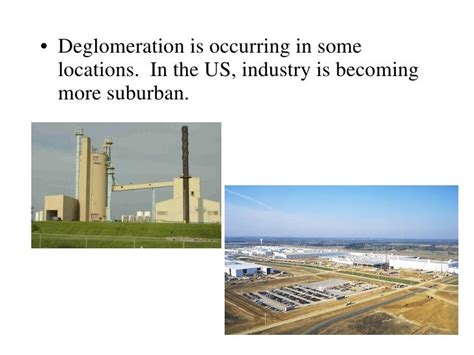The AP Human Geography curriculum, renowned for its exploration of global patterns and processes, often overlooks the significance of the footloose industry, a dynamic sector that has profound implications for economic development and spatial organization. By delving into the characteristics, impacts, and transformative potential of this industry, educators can enrich the curriculum and foster a deeper understanding of contemporary global dynamics.

Defining the Footloose Industry
Footloose industries encompass businesses that are not tied to specific geographic locations. They possess the ability to relocate their operations with relative ease due to minimal reliance on physical resources, specialized labor, or transportation infrastructure. Examples include software development, financial services, and call centers.
Key Characteristics of Footloose Industries
- Geographic flexibility
- Low dependence on physical inputs
- High mobility of labor
- Emphasis on knowledge and intellectual capital
Impacts of the Footloose Industry
The rise of footloose industries has had a profound impact on the global economy and spatial organization.
1. Economic Impacts
- Job creation in developing countries: Footloose industries offer employment opportunities in regions with lower labor costs, contributing to economic growth.
- Increased global competition: Footloose industries foster competition among countries for investment and talent, potentially leading to improved efficiency and innovation.
- Reduced regional disparities: By locating in areas with underutilized labor, footloose industries can help reduce regional economic disparities.
2. Spatial Impacts
- Urbanization: Footloose industries often concentrate in urban centers, attracting skilled workers and driving population growth.
- Suburbanization: Some footloose industries decentralize their operations to suburban or rural areas, creating new employment opportunities and reducing urban congestion.
- Global connectivity: Footloose industries facilitate the exchange of information, goods, and services across borders, strengthening global interconnectedness.
Transformative Potential of the Footloose Industry
The footloose industry holds immense potential to transform economies and societies.
1. Economic Development
- Employment generation: Footloose industries provide vital employment opportunities in countries facing high unemployment rates.
- Skill development: The knowledge-intensive nature of footloose industries fosters skill development, enhancing human capital.
- Infrastructure investment: The location of footloose industries in regions with underdeveloped infrastructure can spur investment in transportation, communication, and energy.
2. Social Development
- Improved living standards: Employment in footloose industries can lead to higher wages and improved living standards for workers.
- Cultural exchange: The mobility of workers in footloose industries promotes cultural exchange and understanding.
- Women’s empowerment: Footloose industries often offer flexible work arrangements that can empower women to balance work and family responsibilities.
Applications of Footloose Industry
- Time zone arbitrage: Companies can leverage time zone differences to operate 24/7, increasing productivity and customer service.
- Cloud computing: The cloud provides a cost-effective and scalable platform for footloose businesses to store and process data.
- Artificial intelligence (AI): AI-powered tools can automate tasks and streamline operations, enhancing efficiency and competitiveness.
Pain Points and Motivations
Despite the potential benefits, footloose industries face certain challenges and motivators.
1. Pain Points
- Language and cultural barriers
- Data security and privacy concerns
- Unfair labor practices
2. Motivations
- Cost reduction
- Access to skilled labor
- Political stability
Enriching the AP Human Geography Curriculum
By incorporating the footloose industry into the AP Human Geography curriculum, educators can:
- Expand students’ understanding of global economic and spatial patterns.
- Develop critical thinking skills by analyzing the impacts and transformative potential of footloose industries.
- Foster interdisciplinary connections with economics, sociology, and technology.
In Summary
Table 1: Impacts of Footloose Industries
| Impact | Description |
|---|---|
| Economic | Job creation, increased competition, reduced regional disparities |
| Spatial | Urbanization, suburbanization, global connectivity |
| Social | Improved living standards, cultural exchange, women’s empowerment |
Table 2: Pain Points and Motivations for Footloose Industries
| Pain Point | Motivation |
|---|---|
| Language and cultural barriers | Cost reduction |
| Data security and privacy concerns | Access to skilled labor |
| Unfair labor practices | Political stability |
Table 3: Applications of Footloose Industry
| Application | Description |
|---|---|
| Time zone arbitrage | Operating 24/7 to increase productivity |
| Cloud computing | Scalable and cost-effective data storage and processing |
| Artificial intelligence (AI) | Task automation and streamlined operations |
Table 4: Key Findings
| Finding | Implication |
|---|---|
| The footloose industry is a growing force in the global economy. | Footloose industries have significant impacts on economic development and spatial organization. |
| Footloose industries offer potential benefits for both developed and developing countries. | Educators should incorporate the footloose industry into the AP Human Geography curriculum to enrich students’ understanding of contemporary global dynamics. |
Integrating the footloose industry into the AP Human Geography curriculum offers a transformative opportunity to enhance students’ appreciation of the complexities of global spatial organization and economic development, empowering them to engage with pressing global issues.
